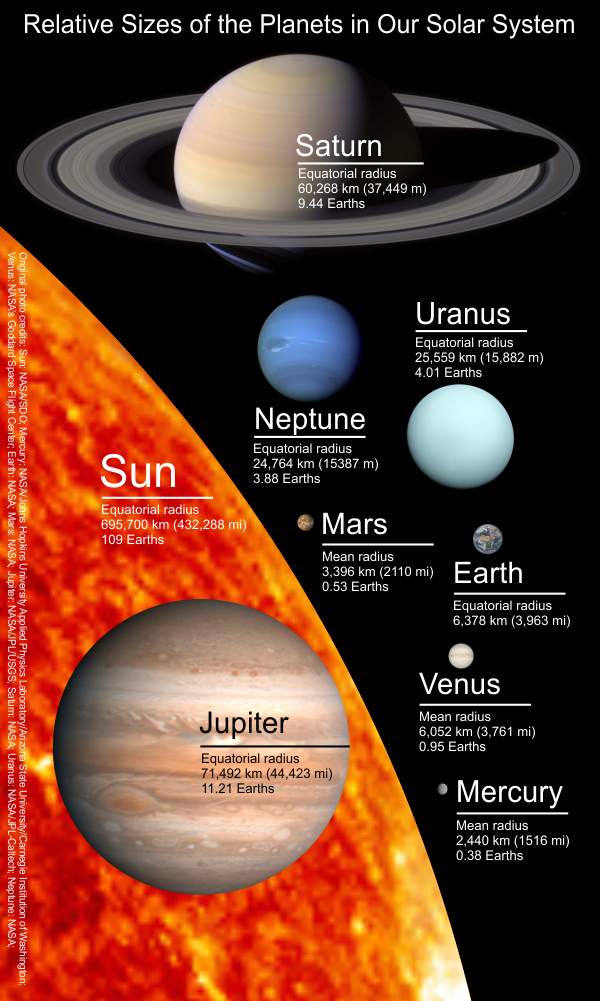The International Astronomical Union (IAU) defines a planet in our Solar System as follows:
“A planet is a celestial body that (a) is in orbit around the Sun, (b) has sufficient mass for its self-gravity to overcome rigid body forces so that it assumes a hydrostatic equilibrium (nearly round) shape, and (c) has cleared the neighbourhood around its orbit.”
According to this definition, there are eight major planets in our solar system. In increasing order of distance from the Sun, these are:

See the page on Our Solar System for a scale diagram showing the distance of the planets’ orbits from the Sun.
The planets formed from dust and gas in the solar nebula surrounded the Sun when it first formed around 4.6 billion years ago. As this nebula collapse under its own gravity, the Sun formed at the centre and the remaining material coalesced into a ‘protoplanetary disk’ surrounding the newly formed star.
As the small grains of dust in the protoplanetary disk collided with each other, they began to coalesce into larger bodies that eventually formed the planets as well as the smaller bodies in our solar system, such as the asteroids and dwarf planets and those making up the Kuiper Belt and the Oort Cloud.
See also: